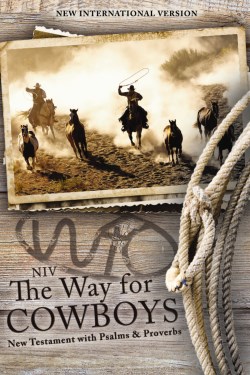New Testament In The Original Greek Byzantine Textform 2018
$33.31
The present volume displays the Greek New Testament according to its historically dominant transmissional form, known as the Byzantine Textform. In view of the significance of this text throughout the centuries, this compact edition should be of value to student and scholar alike for academic, personal, and ministerial purposes.
Most modern critical editions of the Greek New Testament present an eclectic form of text that primarily represents the localized Alexandrian-based manuscripts. Other available editions exhibit forms of the so-called Textus Receptus or the lectionary-based Patriarchal (Antioniades) version of the Greek Orthodox Church. In contrast, the present edition reflects the regularly utilized consensus found among Greek continuous-text manuscripts that span the extensive geographic realm of the Byzantine Empire throughout at least its thousand-year history.
An apparatus at the foot of the page displays all differences between the Byzantine consensus main text and the Nestle-Aland 27th and 28th editions, as well as differences appearing in the Editio Critica Maior for the book of Acts. Alternative Byzantine readings are noted in a separate apparatus when the primary Textform is significantly divided.
The 27 New Testament books are ordered according to early canonical lists, with the General Epistles following Acts, and Hebrews placed between Paul’s letters to churches and to individuals.
The present edition thus provides an affordable Greek New Testament in flexible binding that conveniently fills a particular textual void in relation to research, study, and practical ministry.
in stock within 3-5 days of online purchase
SKU (ISBN): 9783957761002
ISBN10: 395776100X
Translation: Foreign
Language: Greek
Color: Full Color
Binding: Paper
Published: January 2018
Publisher: Sunday School Publishing Board
Print On Demand Product
Related products
-
Swahili New Testament Bible Outreach Edition
$12.48Second Adam Publishing title
An economy Swahili-language New Testament designed for evangelism outreach in East Africa, this edition is constructed from the trustworthy and easy-to-read Kimvita 1914 version. It is also complete with a gospel presentation, maps with Swahili helps, and some illustrations.
Add to cartin stock within 3-5 days of online purchase
-
Way For Cowboys New Testament With Psalms And Proverbs Pocket Sized Comfort
$6.99A compact New Testament that helps today’s cowboys find the Way to eternal life.Anybody who loves the cowboy lifestyle will identify with the NIV, The Way for Cowboys New Testament with Psalms and Proverbs. Developed in partnership with the Fellowship of Christian Cowboys, this New Testament includes added color pages with encouraging articles and Bible helps to nurture your spiritual journey. Compact and portable, it fits comfortably in any back pocket or saddlebag.This New Testament with Psalms and Proverbs is available in the exclusive Zondervan NIV Comfort Print(R) typeface for smooth reading. Expertly designed specifically to be used for the New International Version (NIV) text, Comfort Print offers an easier reading experience that complements the most widely read modern-English Bible translation.Features include:New Testament with Psalms and Proverbs text of the accurate, readable, and clear New International Version (NIV)48 full-color pages of personal and spiritually encouraging articles, a 28-day Bible reading plan, the Gospel presentation, and advice for next steps on your faith journeyEasy-to-carry pocket sizePlan of salvationExclusive Zondervan NIV Comfort Print typeface for ease of readingPrint Size: 7The New International Version (NIV) is the world’s bestselling modern-English Bible translation-accurate, readable, and clear, yet rich with the detail found in the original languages. The NIV is the result of over 50 years of work by the Committee on Bible Translation, who oversee the efforts of many contributing scholars. Representing the spectrum of evangelicalism, the translators come from a wide range of denominations and various countries and continually review new research to ensure the NIV remains at the forefront of accessibility, relevance, and authority. Every NIV Bible that is purchased helps Biblica translate and give Bibles to people in need around the world.
Add to cartin stock within 3-5 days of online purchase
-
Navajo English Bilingual New Testament
$6.55Bilingual New Testament in Navajo and English.
Add to cartin stock within 3-5 days of online purchase
-
Persian Contemporary Bible New Testament
$12.99This New Testament features the Farsi Contemporary Bible, a translation that employs a “thought-for-thought” methodology to facilitate ease of comprehension. It is ideal for Farsi speakers who are reading the Bible for the first time and who are open to talking about God.Features include:Complete New Testament text of the Farsi Contemporary BibleBook introductions that explain the who, what, when, and where of each book of the New TestamentTwo-column format14.5-point text size enhances the readability of the Arabic character-based language
Add to cartin stock within 3-5 days of online purchase

















Reviews
There are no reviews yet.